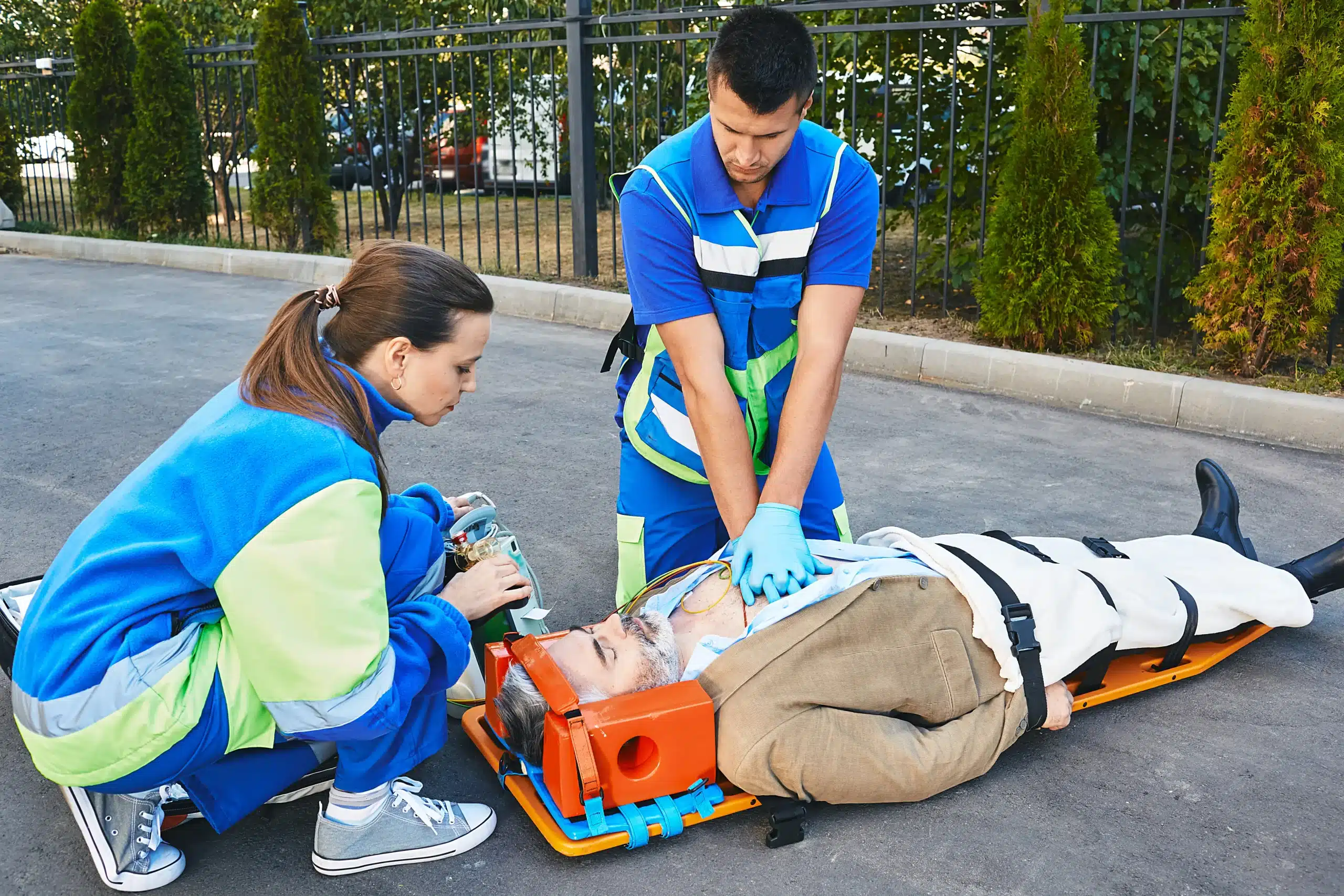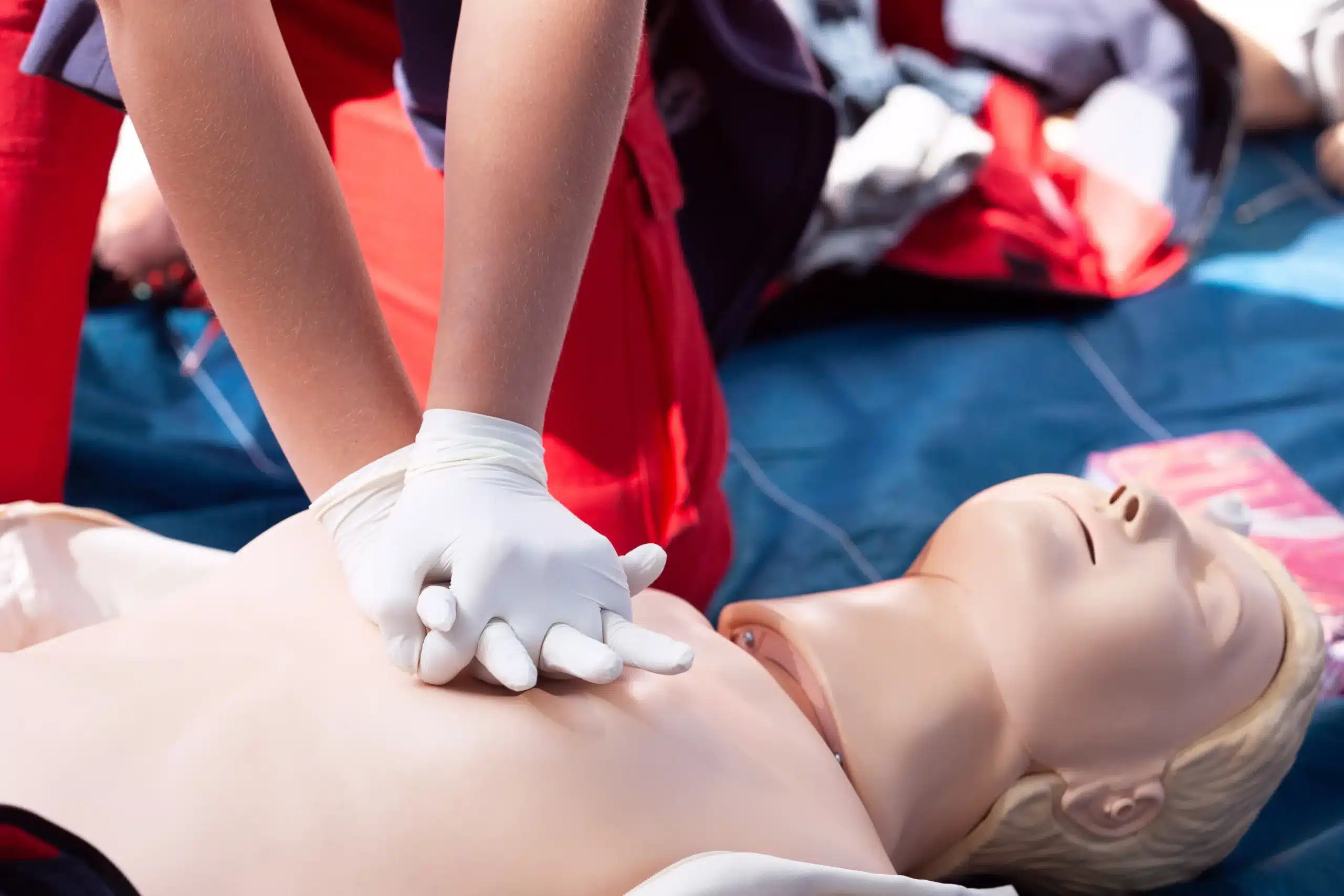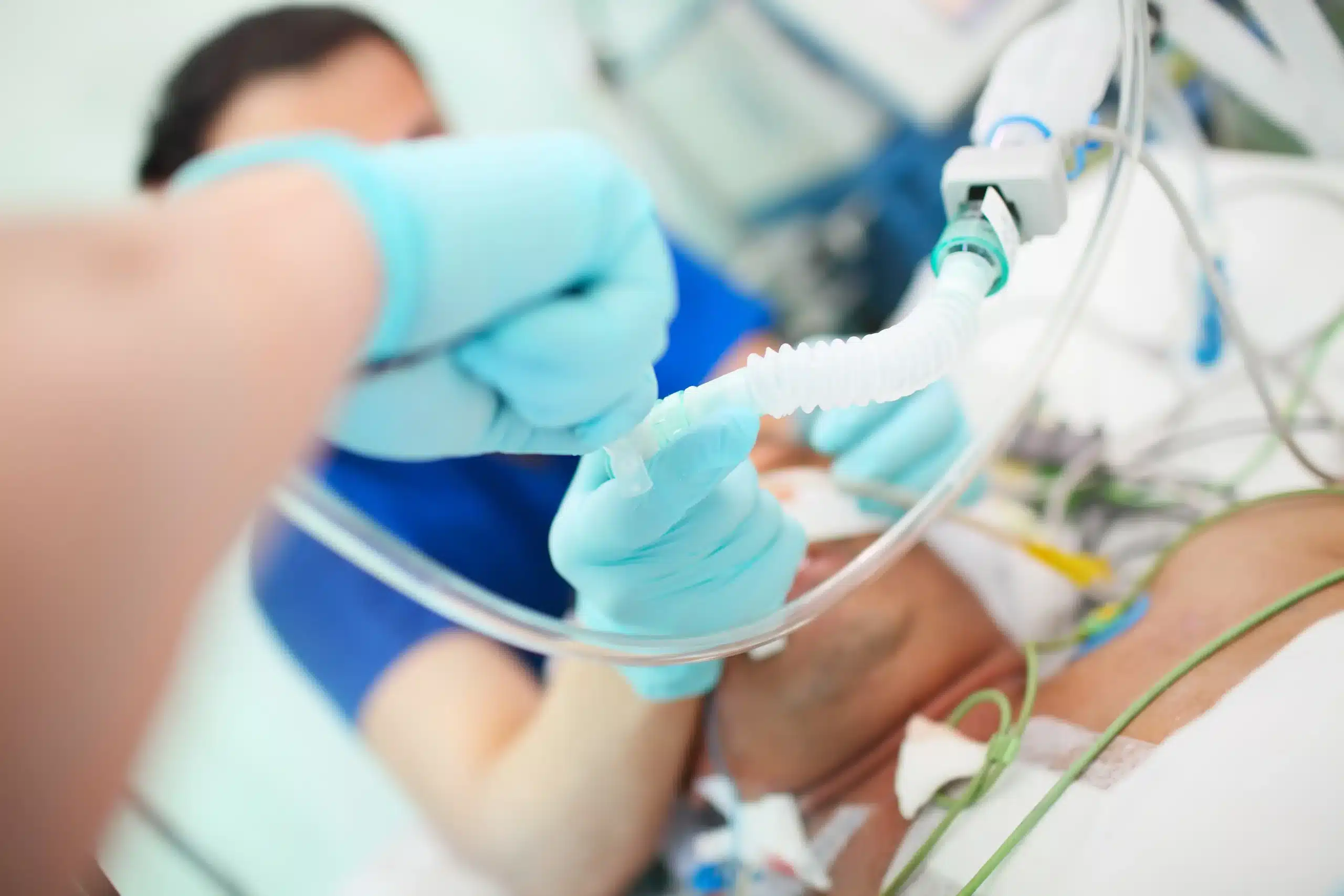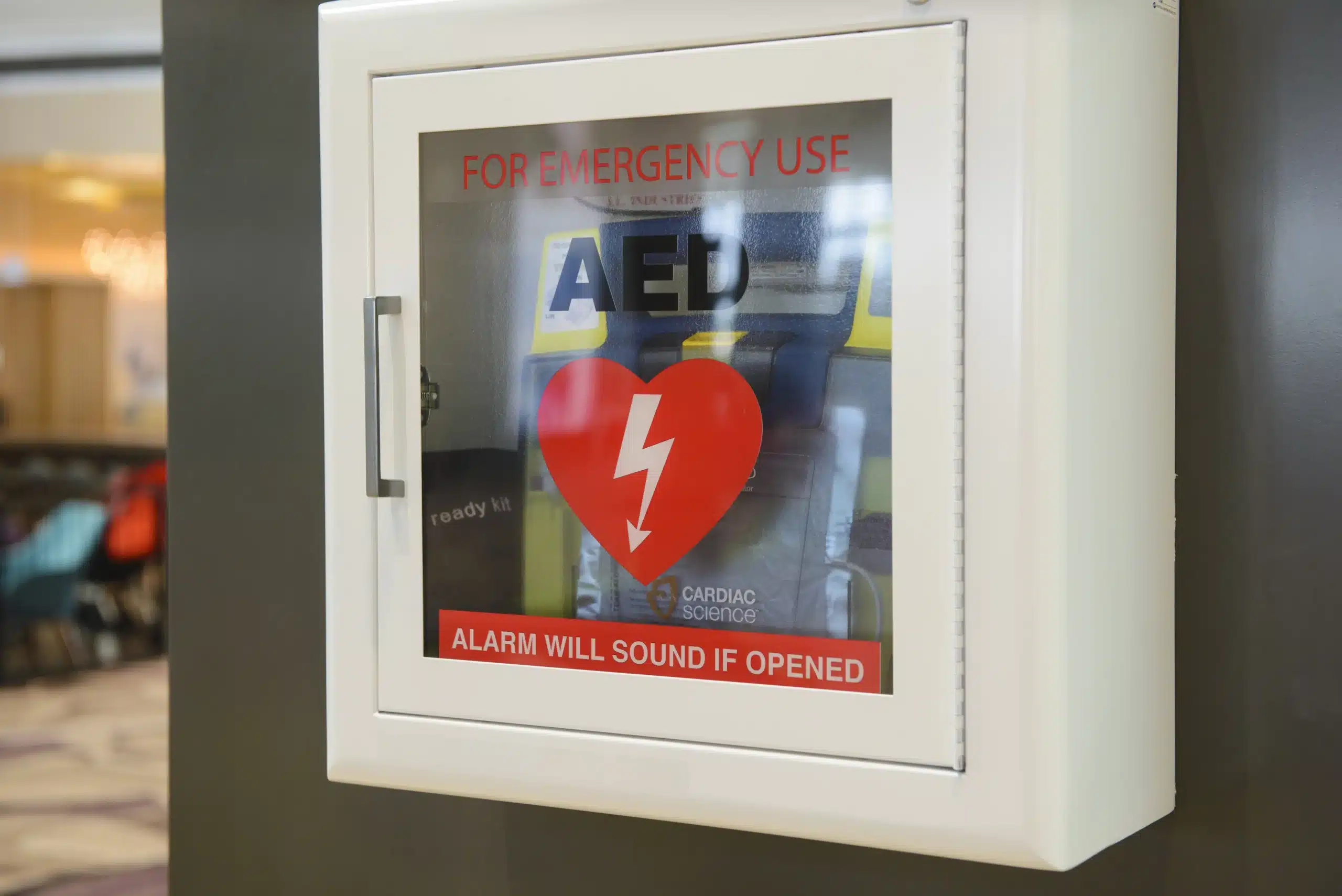Working with children brings immense joy, but it also comes with a responsibility to ensure their safety. For school staff in San Mateo, this means being equipped to handle medical emergencies, and CPR training is a crucial part of that preparedness. This guide will walk you through the essential aspects of CPR for school staff in San Mateo, from understanding certification requirements to finding the right training program. We’ll cover the various types of CPR courses available, discuss the skills you’ll learn, and highlight the benefits of having a CPR-certified team. We’ll also provide valuable resources and tips for maintaining your CPR skills, ensuring you’re always ready to respond effectively.
Key Takeaways
- Check with your school district for specific CPR requirements. Requirements vary, so contact your district’s HR department or consult their website for the most accurate information.
- Stay up-to-date with your CPR skills. Regularly refresh your training to maintain proficiency, even if recertification isn’t mandatory. Numerous providers offer convenient online and in-person courses.
- Promote a culture of safety within your school. Encourage colleagues to maintain their CPR certifications and advocate for regular training sessions and updated emergency plans. This creates a safer environment for everyone.
What are CPR Certification Requirements for School Staff in San Mateo?
Want to know the CPR certification requirements for school staff in San Mateo? It’s a smart question, since keeping kids safe is always a top priority. While California doesn’t have a statewide mandate for CPR certification for all school employees, most districts recognize the value of having trained staff. This means requirements can vary between districts, even within San Mateo County. Always check with your specific school district for their exact requirements. You can usually find this information on the district’s website or by contacting the human resources department.
Legal and District Mandates
California law doesn’t specifically require CPR certification for all school staff. However, many districts choose to mandate it, especially for teachers working with younger children or those in specialized roles like athletics or special education. Some districts may also require other certifications, such as First Aid or Basic Life Support (BLS). Because these requirements are set at the district level, it’s essential to confirm the specifics with your school or district administration.
Certification Content and Renewal Policies
So, what does a typical CPR certification for school staff cover? Generally, certifications cover adult, child, and infant CPR, how to use an automated external defibrillator (AED), and basic first aid. This first aid training usually includes how to handle common injuries like cuts and burns, as well as how to respond to choking emergencies. CPR certifications are typically valid for two years. Even if your school district doesn’t explicitly require recertification, staying up-to-date is crucial for maintaining those life-saving skills. Regular refresher courses can help ensure you’re always prepared to respond effectively in an emergency. Check with your district about their specific renewal policies and recommended training providers like Safety Training Seminars in San Mateo. They offer a range of CPR, First Aid, and BLS courses that meet common district requirements.
CPR Training Courses for Educators
CPR/AED for Adults, Children, and Infants
As an educator in San Mateo, you play a vital role in student safety. This often means knowing how to respond to medical emergencies. Many California school districts require teachers, especially those working with younger children, to have current CPR and First Aid certifications. These certifications typically cover CPR for adults, children, and infants, along with AED training. It’s essential to choose a course that aligns with these requirements, covering the specific techniques for each age group. Infant CPR, for example, differs significantly from adult CPR—knowing these distinctions can be life-saving.
First Aid Training
Beyond CPR, first aid training equips educators to handle various medical situations, from minor injuries to more serious incidents like burns and choking. A well-rounded first aid course will teach you how to assess injuries, provide initial care, and determine when to seek further medical help. This knowledge is invaluable in a school setting, where quick, informed action can make a real difference.
Basic Life Support (BLS)
For educators in healthcare settings or those wanting a more advanced understanding of life support, BLS certification is often recommended. BLS courses delve deeper into CPR principles, emphasizing high-quality chest compressions, rescue breaths, and teamwork during emergencies. BLS certification is often a prerequisite for advanced certifications like ACLS and PALS. While the cost of BLS certification in San Mateo varies, you can find affordable options. Many providers offer flexible scheduling.
Pediatric Advanced Life Support (PALS)
While not always required for all school staff, PALS certification is highly beneficial for those working directly with children. PALS builds upon BLS, focusing on the specialized skills needed to respond to pediatric emergencies. This advanced training covers topics such as respiratory distress, shock, and cardiac arrest in infants and children. Providers like Daly City CPR Classes offer comprehensive PALS training in San Mateo County. Having PALS-trained educators can significantly enhance the level of care provided to students in critical situations.
Top CPR Training Providers in San Mateo
Finding the right CPR training provider is essential for school staff. Here are a few reputable options in San Mateo:
Safety Training Seminars
Safety Training Seminars offers a comprehensive range of American Heart Association (AHA)-certified courses, including BLS, ACLS, PALS, CPR, and First Aid. They prioritize excellent customer service and offer a low-price guarantee, making them a solid option for your training needs. Conveniently located in San Mateo, they serve San Mateo, Daly City, and Millbrae, CA. They also provide RQI programs for healthcare professionals seeking recertification.
In-Home CPR
If you prefer on-site training, In-Home CPR brings the training directly to your home or school. They offer various certifications, including AHA, American Safety & Health Institute (ASHI), and American Red Cross. Their courses cover CPR/AED, First Aid, BLS, ACLS, and pediatric-focused classes. This flexibility makes them a practical choice for busy school staff or group training. Learn more about their San Mateo CPR and first-aid classes.
San Mateo Consolidated Fire Department
The San Mateo Consolidated Fire Department (SMCFD) offers valuable public education programs, including CPR/AED training. Their program covers CPR techniques, how to respond to choking emergencies, and how to use an AED. This can be a cost-effective choice for individuals or schools seeking basic CPR and AED knowledge.
Heart Start CPR
Heart Start CPR provides AHA-approved courses in both online and in-person formats, including on-site training. They understand California school requirements and offer programs designed to meet those needs. Explore their CPR certification options for teachers.
CPR Training Costs & Group Rates for Schools
Average San Mateo Pricing
When budgeting for CPR training for your school staff in San Mateo, it’s helpful to understand the average costs. A two-hour course covering CPR and AED use typically runs around $35 per person. For larger groups, many training providers in San Mateo offer group discounts for classes of eight or more, usually around $280 total. This can be a more economical choice for schools needing to train multiple staff members. This information is based on local market research from CPR training providers in San Mateo.
School Discounts and Group Rates
Many CPR training providers understand the importance of accessible training for schools and offer discounted rates for group bookings. Safety Training Seminars, for example, can conduct BLS, CPR, and First Aid training at your school. This on-site training makes scheduling easier and potentially lowers the cost for larger groups. This approach helps schools train more staff and create a safer environment. For more information on CPR training options in San Mateo, check out this helpful guide.
Low-Price Guarantee Options
To make training even more affordable, some CPR training providers offer a low-price guarantee. Safety Training Seminars, for instance, provides this guarantee on their American Heart Association CPR and First Aid courses. This commitment to affordability ensures schools receive high-quality training at a competitive price, allowing them to prioritize staff safety and preparedness without overspending. You can learn more about their low-price guarantee here.
Get CPR Certified: A Guide for Educators
Course Duration and Format Options
Educators in San Mateo have several choices for CPR certification. Initial Basic Life Support (BLS) certification typically costs around $90, with renewals around $60. Providers like Safety Training Seminars offer a variety of BLS course formats to fit busy schedules, with classes available daily. This makes it easier to find a time that works for you.
Certification Validity and Renewal
CPR certifications are generally valid for two years. Mark your calendar for your renewal date and plan to take a refresher course to maintain your certification. This ensures you’re always ready to respond effectively in an emergency. Check with your school district for their specific renewal policies.
Online vs. Hands-On Training
Many reputable CPR training providers offer online courses, providing a convenient way to learn these essential skills. While California accepts online CPR training, some school districts might require hands-on training elements. Confirm the requirements with your district to choose the right course format. Safety Training Seminars offers both online and in-person options to meet your needs and preferences.
Key Skills Taught in CPR Courses
CPR courses equip you with essential life-saving skills applicable in various emergencies. From performing CPR on infants to using an AED, these courses cover a range of techniques. Let’s explore some key skills you’ll gain.
Chest Compressions and Rescue Breaths
Chest compressions and rescue breaths are the foundation of CPR. These techniques maintain blood circulation and oxygen flow when someone experiences cardiac arrest. You’ll learn proper hand placement, compression depth, and the correct ratio of compressions to breaths for adults, children, and infants. Safety Training Seminars covers these core skills in their CPR certification courses.
Using an AED
CPR training also covers using an automated external defibrillator (AED). AEDs are portable devices that analyze heart rhythms and deliver an electric shock to restore a normal heartbeat during sudden cardiac arrest. Knowing how and when to use an AED is crucial for CPR certification and can dramatically improve survival rates. The San Mateo Consolidated Fire Department also stresses the importance of AED training.
Responding to Choking
Choking emergencies can be life-threatening, so knowing how to respond quickly and effectively is vital. CPR courses teach you how to recognize choking signs and perform the right techniques to clear the obstruction in both adults and children. For additional resources and information on CPR training, you can check out Thumbtack.
Pediatric CPR Techniques
Because children have different physiology than adults, they require specific CPR techniques. Pediatric CPR training focuses on adapting chest compressions and rescue breaths for the smaller bodies of infants and children. San Mateo CPR Courses offers comprehensive training in pediatric CPR to prepare you for emergencies involving younger individuals.
Benefits of CPR Training for School Staff
Having CPR-certified staff is vital for a safe learning environment. From teachers and coaches to administrative staff, everyone plays a role in student safety. Here’s why CPR training benefits school staff:
Respond to Emergencies Effectively
CPR and first-aid certification equip school staff to respond effectively to emergencies. Seconds matter when someone experiences sudden cardiac arrest or another medical crisis. Trained staff can provide immediate assistance, increasing the chances of survival while waiting for paramedics. This quick response can dramatically improve outcomes in critical situations. Knowing how to assess a situation and administer aid confidently makes a real difference.
Create a Safer School
CPR training creates a safer environment for students and staff. When a school invests in this training, it cultivates a culture of preparedness and safety. This can extend beyond medical emergencies to other safety procedures, creating a more secure atmosphere. Many CPR training providers, like Safety Training Seminars, offer discounts to make their courses more accessible, furthering their commitment to community safety. Their low-price guarantee on American Heart Association CPR and First Aid courses makes it easier for schools in Northern California to prioritize staff training.
Comply with Regulations
CPR and first-aid certification often align with district regulations and state mandates. While specific requirements vary, many California school districts require teachers, especially those working with young children, to hold current certifications. Staying informed about and complying with these requirements ensures a safe and legally sound environment. Check with your district for specific CPR certification requirements.
Empower Staff with Life-Saving Skills
CPR training empowers school staff with life-saving skills they can use at school and in their personal lives. Equipping staff with these skills goes beyond simply fulfilling a requirement; it gives them the confidence to act in emergencies. Safety Training Seminars offers a comprehensive range of AHA-certified courses, including BLS, ACLS, PALS, CPR and First Aid, and RQI. This range of courses ensures staff can find training that suits their roles.
Integrate CPR into School Emergency Plans
Integrating CPR training into your school’s emergency plan is crucial for student and staff safety. This involves developing comprehensive safety protocols, conducting regular drills, and coordinating with local emergency services. By taking these steps, schools can create a prepared and responsive environment.
Develop Comprehensive Safety Protocols
Start by establishing clear, written protocols for medical emergencies, including cardiac events. These protocols should outline the steps to take when someone experiences a sudden cardiac arrest, including when and how to initiate CPR and use an automated external defibrillator (AED). Make sure these protocols are easily accessible to all staff members and regularly reviewed. Consider partnering with CPR training providers like Safety Training Seminars, which offers a low-price guarantee on American Heart Association CPR and First Aid courses in Northern California. This can help schools manage the costs associated with training.
Conduct Regular Drills
Regular CPR and emergency response drills are essential for reinforcing training and ensuring staff can effectively respond under pressure. These drills should simulate real-life scenarios and involve all relevant staff members, including teachers, administrators, and support staff. Practicing these procedures regularly helps build muscle memory and confidence, allowing staff to react quickly and efficiently in a real emergency. For comprehensive training options, consider the range of AHA-certified courses—including BLS, ACLS, PALS, CPR, and First Aid—offered by Safety Training Seminars.
Coordinate with Local Emergency Services
Establish a strong working relationship with your local emergency medical services (EMS). This includes providing them with clear access to the school campus and ensuring they are familiar with the school’s emergency protocols. Regular communication and joint training exercises can help streamline the response process when a medical emergency occurs. This coordination is vital for ensuring a rapid and effective response when professional medical help arrives. San Mateo offers a variety of CPR courses to meet the needs of everyone from community members seeking basic life support to healthcare providers requiring advanced training. This network of resources strengthens community preparedness for emergencies.
Maintain Your CPR Skills
Once you’ve earned your CPR certification, staying up-to-date is crucial. CPR techniques and guidelines can change, so refreshing your knowledge and skills ensures you’re always prepared to respond effectively in an emergency. This is especially important for school staff entrusted with the well-being of students.
Refresher Courses and Updates
CPR certifications are typically valid for two years. While the state licensing body (CTC) doesn’t mandate renewal for California teaching licenses, many individual school districts do. Check with your district for their specific policies. Even if not strictly required, regular refresher courses are a smart way to keep your skills sharp and your confidence high.
Online Resources
Juggling the demands of teaching with personal life can make finding time for in-person training challenging. Thankfully, many reputable providers offer convenient online CPR training. These courses provide a flexible way to review essential skills and stay current with the latest guidelines, fitting easily into your busy schedule.
Build a Culture of Safety
Creating a safe school environment goes beyond individual certifications. Encourage your colleagues to also maintain their CPR skills. Talk to your administration about organizing regular CPR and first aid training sessions for all staff. Providers like Safety Training Seminars offer a range of AHA-certified courses, including BLS, ACLS, PALS, CPR, and First Aid. They even have a low-price guarantee, which can be helpful when coordinating training for larger groups. Building a culture of safety within your school benefits everyone and reinforces the importance of preparedness.
Related Articles
- CPR & First Aid in San Mateo: Your Certification Guide – San Mateo CPR Classes
- CPR Training in San Mateo: Your Complete Guide – San Mateo CPR Classes
- CPR Certification Near Me: Your Complete Guide – San Mateo CPR Classes
- Pediatric CPR & First-Aid Training in San Mateo – San Mateo CPR Classes
- Discount Group Classes – San Mateo CPR Classes
Frequently Asked Questions
Is CPR certification required for all school staff in San Mateo?
California law doesn’t require CPR certification for all school staff, but many San Mateo school districts do, especially for those working with younger students or in specific roles. It’s best to check with your district’s HR department or website for their specific requirements.
What does CPR certification for school staff typically include?
CPR certification usually covers adult, child, and infant CPR, AED use, and basic first aid for common injuries like cuts, burns, and choking. Look for courses that cover all these areas and align with your district’s requirements.
How often do I need to renew my CPR certification?
CPR certifications are typically valid for two years. Check with your school district for their specific renewal policies. Even if your district doesn’t require it, regular refresher courses are a good idea to keep your skills current.
Where can I find CPR training in San Mateo?
Several organizations in San Mateo offer CPR training, including Safety Training Seminars, In-Home CPR, the San Mateo Consolidated Fire Department, and Heart Start CPR. They offer various courses, including BLS, ACLS, PALS, CPR, and First Aid. Consider factors like cost, location, and course content when choosing a provider.
Are there group discounts for CPR training for school staff?
Yes, many CPR training providers offer group discounts for schools. Contact providers directly to inquire about group rates and on-site training options, which can make training more convenient and affordable for your school.





